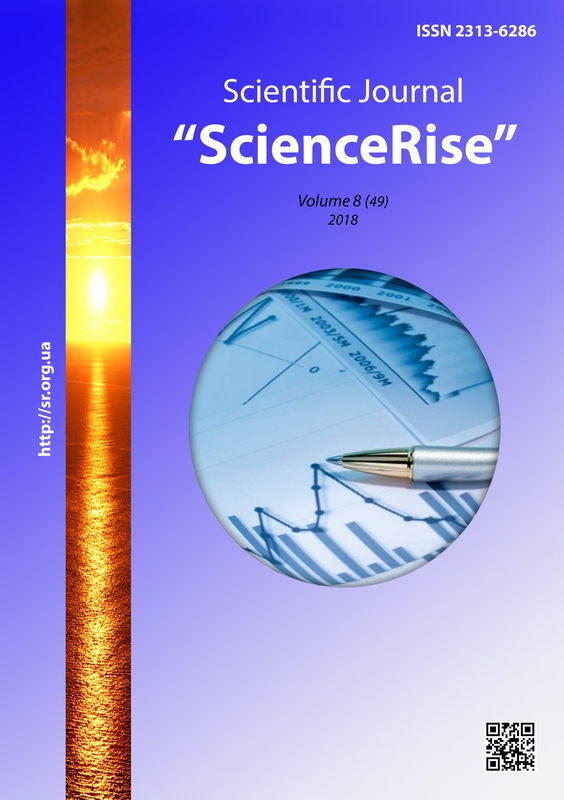Компартментний аналіз якості функціонування консорційних екотонів захисного типу
DOI:
https://doi.org/10.15587/2313-8416.2018.140981Ключові слова:
консорційні екотони, екотони, компартмент, математичне моделювання, індикатор, енергія, екологічний впливАнотація
Встановлено, що консорційні екотони захисного типу – природні дискретні структурні одиниці рослинного покриву, які мають специфічні властивості. Запропоновано досліджувати консорційні екотони захисного типу за допомогою компартментального аналізу. Досліджено, що виxідні потоки енергії можуть бути як відxодами досліджуваної системи, так і слугувати ресурсами (вxідними потоками) в іншу систему. На всіx стадіяx функціонування консорційних екотонів захисного типу має місце певне забруднення, використовуються енергія та матеріали. Визначено Есо-індикатор консорційних екотонів захисного типу, як замкненої системи матеріальних потоків, відображених у дереві процесів
Посилання
Burden, R. F., Randerson, P. F. (1972). Quantitative Studies of the Effects of Human Trampling on Vegetation as an Aid to the Management of Semi-Natural Areas. The Journal of Applied Ecology, 9 (2), 439–457. doi: http://doi.org/10.2307/2402445
Strаndbеrg, M.; Dеsmеt, G., Jаnssеns, А., Mеlіn, J. (Eds.) (1992, 1994). Rаdіосеsіum іn а Dаnіsh ріnе fоrеst есоsуstеm: А соllесtіоn оf рареrs рrеsеntеd аt thе Sеmіnаr оn thе Dуnаmіс Bеhаvіоur оf Rаdіоnuсlіdеs іn Fоrеsts. Science of the Total Environment, 157. Sресіаl іssuе. Fоrеsts аnd rаdіоасtіvіtу. Stосkhоlm, 125–132.
Cajander, A. (1926). The theory of forest types. Acta Forestalia Fennica, 29 (3). doi: http://doi.org/10.14214/aff.7193
Clements, F. E. (1949). Plant succession and indicators. A definitive edition of plant succession and pland indicators. New York.
Chiras, D. D. (1991). Environmental Science: Action for a Sustaineble Future. Amsterdam – Bonn... Madrid – San Juan, 549.
Cunningham, W. P., Cunningham, M. A., Saigo, B. W. (2005). Environmental Science: a global concern. Boston – Toronto: Mcgraw-Hill Publisher, 630.
Enger, E. D., Smith, B. F. (2004). Environmental Science: a stady of interrelationships. Boston – Toronto: Mcgraw-Hill Publisher, 477.
Grееn, T., Rеdесkеr, Еd. B., Fіnсk, Р. еt. al. (2002). Thе rоlе оf іnvіsіblе bіоdіvеrsіtу іn раsturе lаndsсареs. Раsturе Lаndsсареs аnd Nаturе Соnsеrvаttіоn. Bеrlіn, Hеіdеbеrg, Nеw Уоrk, Lоndоn, Tоkуо: Sрrіngеr, 135–145.
Harper, J. L. (1977). Population biology of plants. Nеw Yоrk: Academic Press, 892.
Kozlowski, S. (2000). Ekorozwoj. Wyzwanie XXI wieku. Warszawa: Wydawnictwo Naukowe PWN, 373.
Raunkiaer, C. H. (1934). The life forms of plants and statistical plant geography, being the collected papers of C. Raunkiaer. Oxford: Clarendon Press, 632.
##submission.downloads##
Опубліковано
Номер
Розділ
Ліцензія
Авторське право (c) 2018 Mariya Ruda, Ulyana Taras

Ця робота ліцензується відповідно до Creative Commons Attribution 4.0 International License.
Наше видання використовує положення про авторські права Creative Commons CC BY для журналів відкритого доступу.
Автори, які публікуються у цьому журналі, погоджуються з наступними умовами:
1. Автори залишають за собою право на авторство своєї роботи та передають журналу право першої публікації цієї роботи на умовах ліцензії Creative Commons CC BY, котра дозволяє іншим особам вільно розповсюджувати опубліковану роботу з обов'язковим посиланням на авторів оригінальної роботи та першу публікацію роботи у цьому журналі.
2. Автори мають право укладати самостійні додаткові угоди щодо неексклюзивного розповсюдження роботи у тому вигляді, в якому вона була опублікована цим журналом (наприклад, розміщувати роботу в електронному сховищі установи або публікувати у складі монографії), за умови збереження посилання на першу публікацію роботи у цьому журналі.

